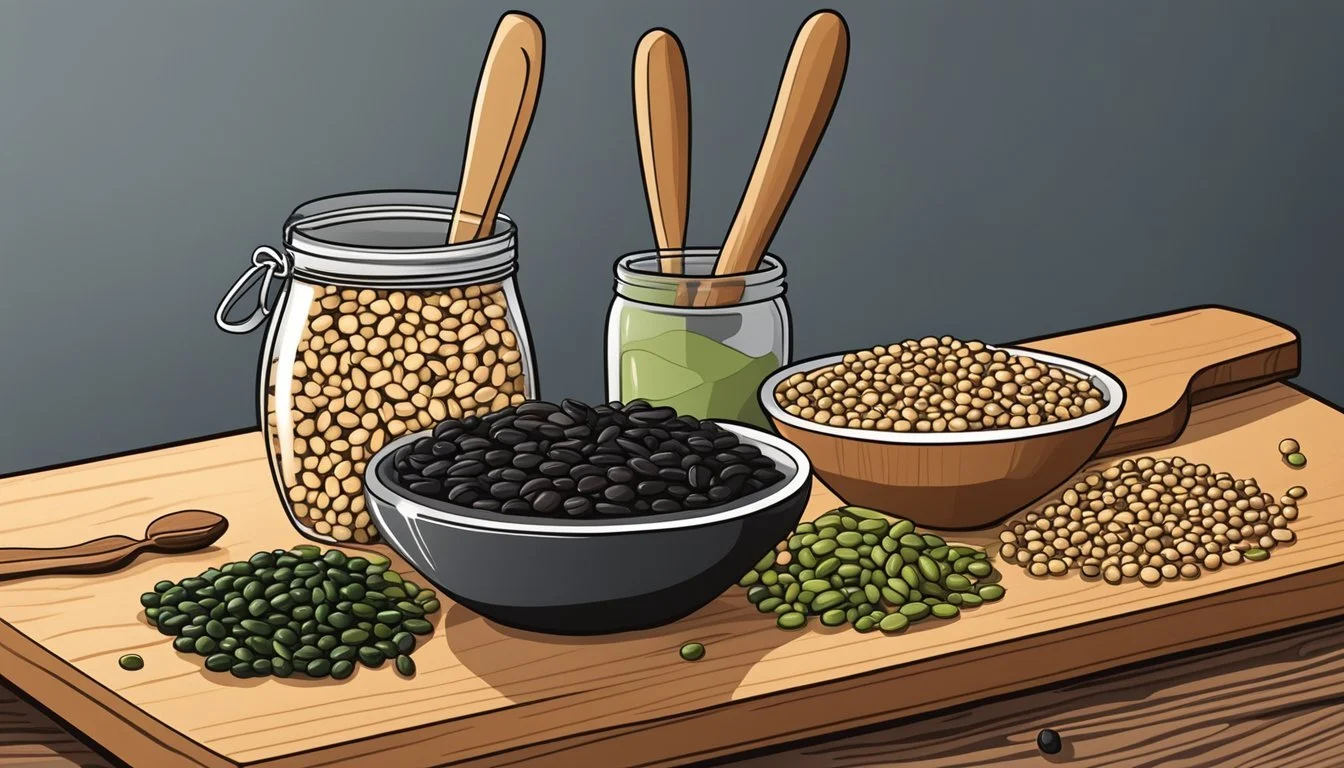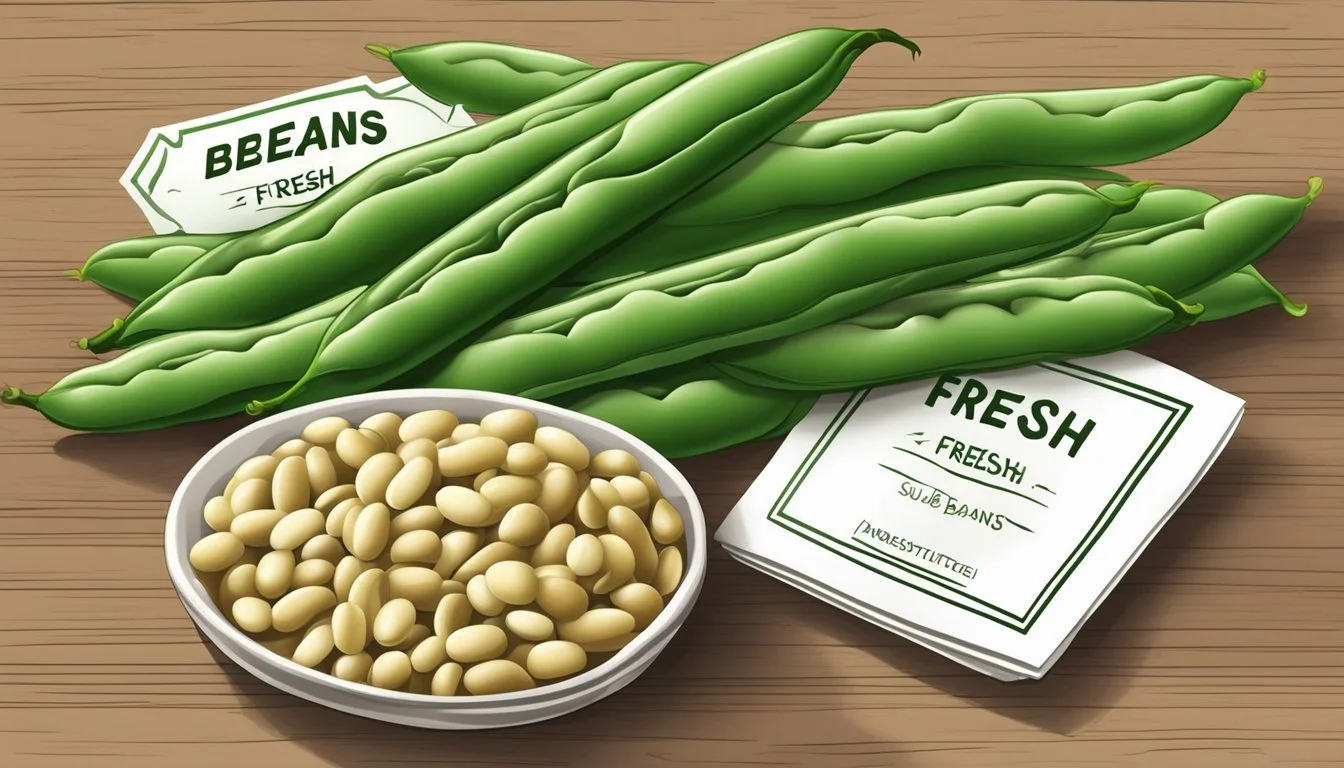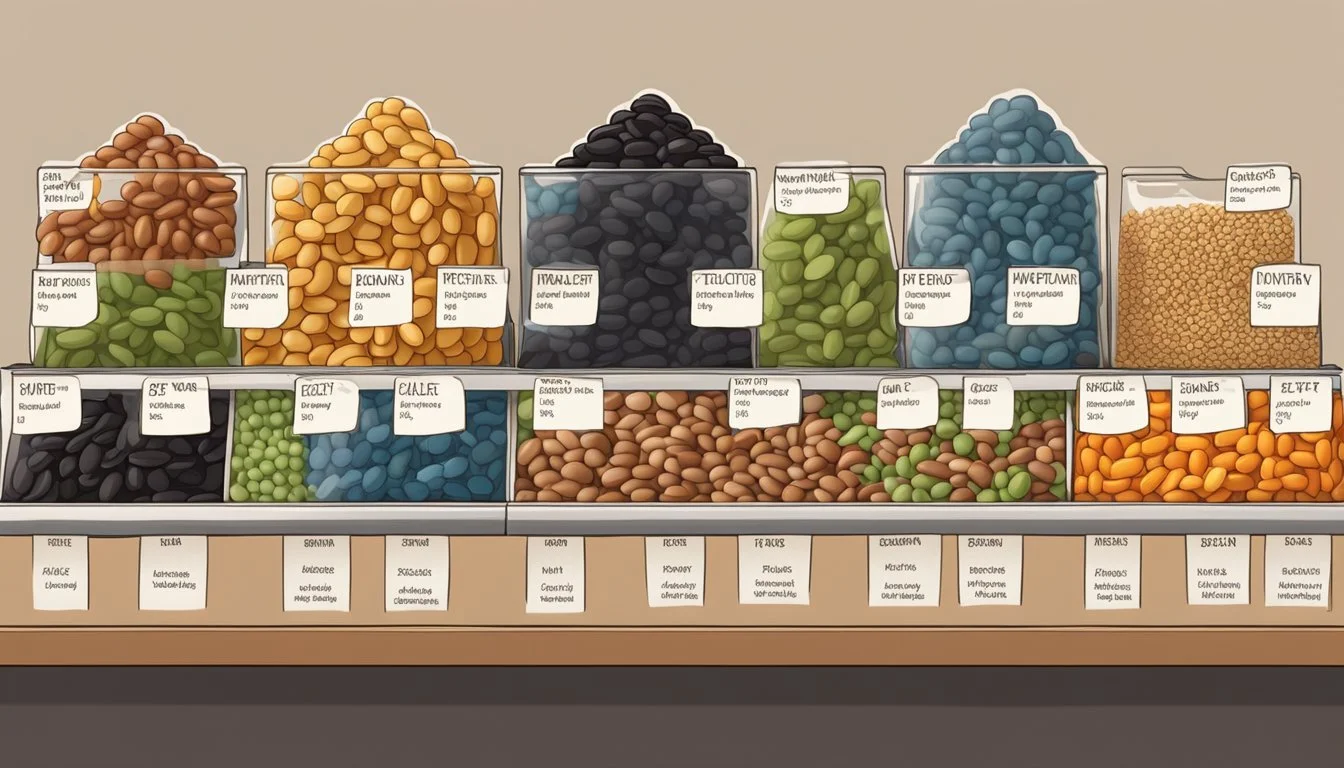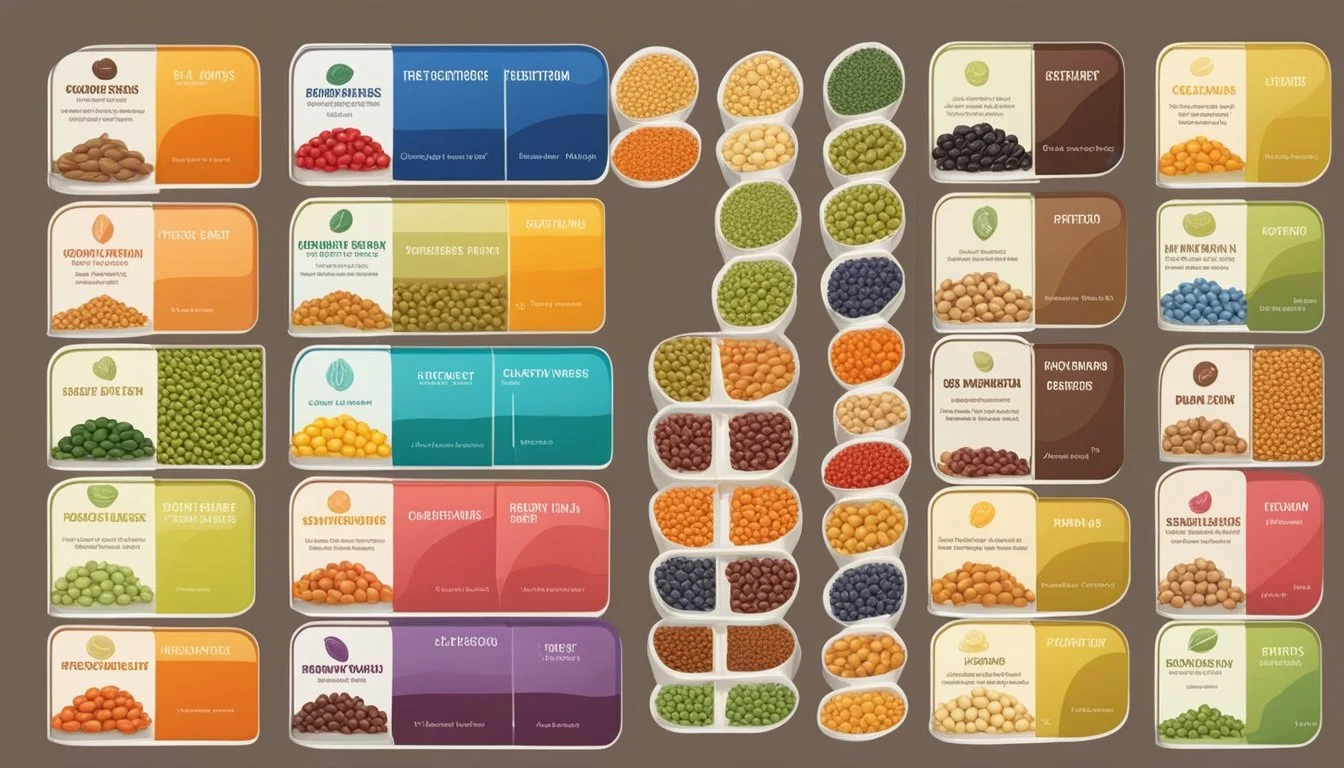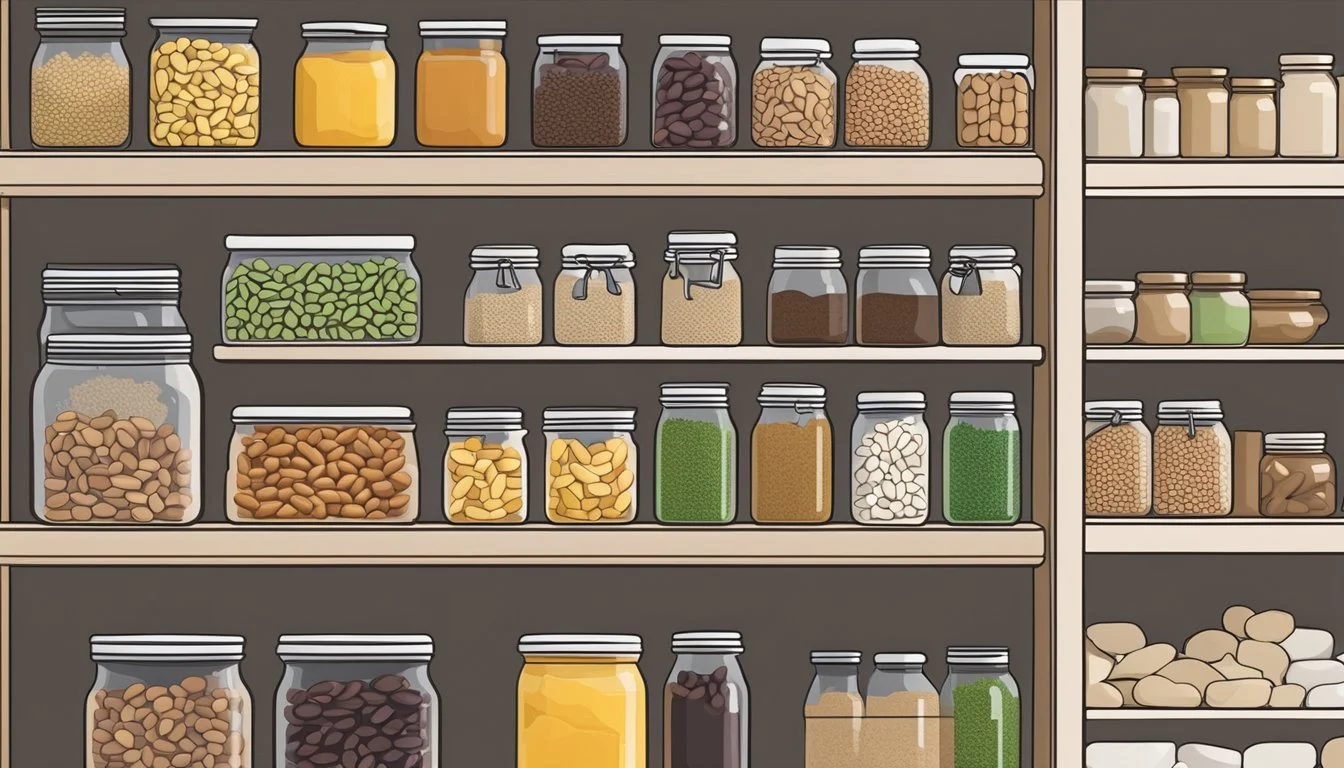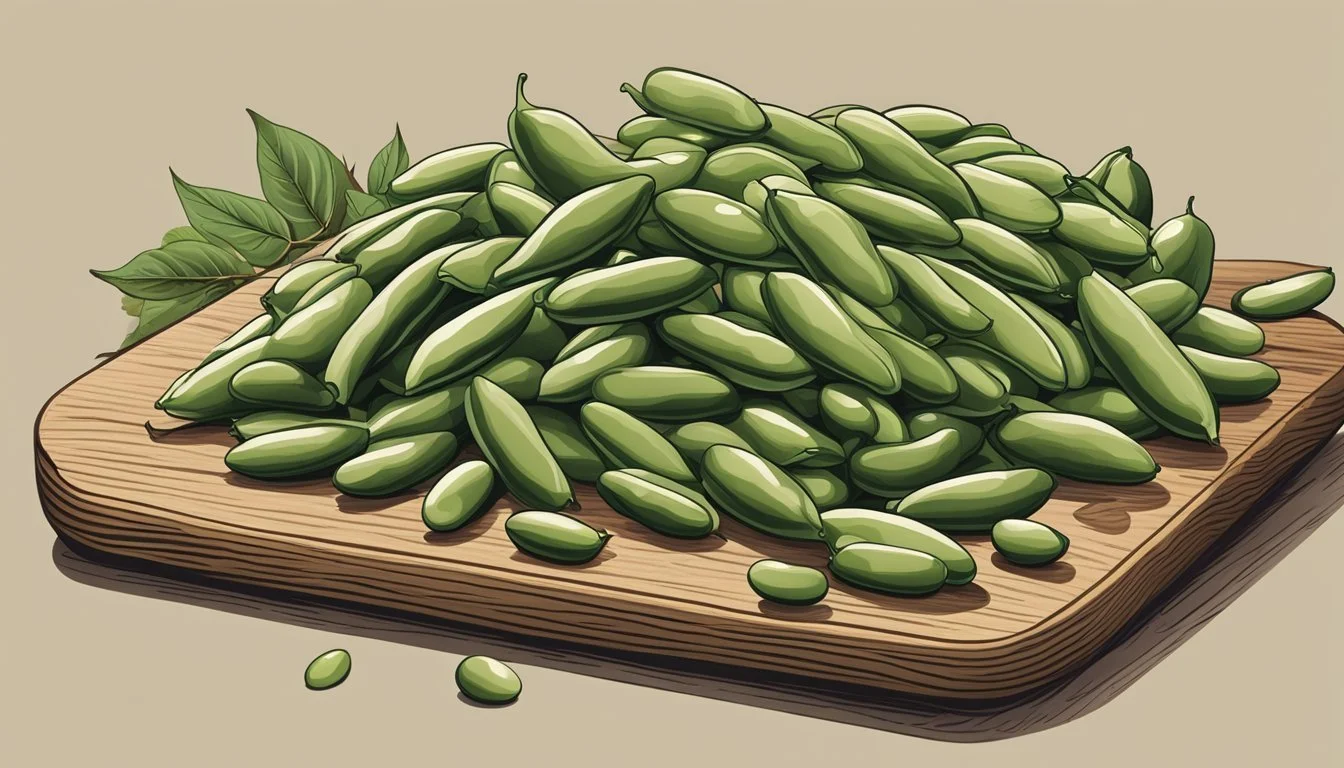Beans (Fresh) Substitutes
Best Alternatives for Your Recipes
Beans are a staple in many cuisines around the world, known for their versatility and nutritional benefits. Fresh beans, in particular, offer a distinct taste and texture that can enhance a variety of dishes from salads to stews. However, there are instances when fresh beans may not be readily available or suitable for certain dietary restrictions, making it necessary to find adequate substitutes.
When fresh fava beans are not an option, cooked cannellini beans can serve as an excellent alternative. They match the creamy texture of fava beans and can be used in similar culinary applications such as soups and stews. Yet, the milder flavor of cannellini beans should be considered when they are used as a substitute since they might not provide the same depth as fava beans in a dish.
For a non-legume option, grains like sorghum, rice, or quinoa are great substitutes, especially in broth-based meals where beans are added whole. These grains contribute to the heartiness of the dish and can be prepared from scratch or incorporated as frozen varieties to save on preparation time.
Understanding Bean Substitutes
When incorporating substitute beans into recipes, one should consider the attributes of both the original and alternative legumes in terms of flavor, texture, nutrition, and how they interact within the dish.
Benefits of Bean Substitutes
The main advantages of using bean substitutes are diversity in taste and texture, nutritional variety, and the ability to tailor dishes to dietary requirements. For those looking to alter the protein or fiber content of a meal, different beans provide varying levels of these nutrients. Some beans, like kidney and black beans, are rich in both protein and fiber, while others might offer a different balance of nutrients including essentials like iron.
Protein: Essential for muscle repair and growth, beans are an excellent source of protein, which varies from bean to bean.
Fiber: A critical component for digestive health, most beans are high in fiber, aiding in satiety and blood sugar regulation.
Iron: Many beans also contribute significant levels of iron, an important mineral for blood health.
Beans are relatively low in calories, making them a nutritious option for those managing their caloric intake.
Common Substitution Criteria
Substituting beans in a recipe effectively depends on assessing certain criteria. One must consider size, shape, and texture, as these can affect the mouthfeel and visual appeal of the dish. Additionally, the flavor profile is important; for instance, pinto beans can replace kidney beans due to their similar rich and nutty taste. Here are common legume substitutes based on these criteria:
Original Bean Substitute(s) Texture Note Flavor Note Red Beans Kidney Beans, Pinto Beans, Adzuki Beans Kidney beans offer a substantial texture, whereas adzuki beans are more delicate. Pinto beans have a nutty flavor suitable for most recipes originally calling for red beans. Kidney Beans Cannellini Beans, Great Northern Beans Cannellini and Great Northern beans provide a creamy texture. Cannellini beans have a mild, nutty flavor. Fava Beans Lima Beans, Marrow Beans Lima beans have a creamy texture that mimics fava beans. Marrow beans offer a robust flavor.
When substituting beans, one must also regard the intended purpose of the bean in the recipe, nutritional needs, and the availability of the substitutes. Beans play various roles in recipes, from being a primary protein source to serving as a complementary texture or flavor enhancer. Additionally, chefs and home cooks should pay attention to the cooking times, as this can vary greatly among different types of beans.
Types of Bean Substitutes
When a recipe calls for beans, several alternatives offer similar nutritional benefits and flavors. These can be especially useful when fresh beans are not available or if someone has dietary restrictions.
Legume-Based Alternatives
Legumes encompass a variety of protein-rich plant foods that can stand in for beans. Chickpeas (also known as garbanzo beans) and lentils are excellent alternatives. They offer a similar texture and are versatile enough for most dishes that typically include beans.
Chickpeas: Ideal in salads and stews.
Lentils: Work well in soups and curries.
Grain and Seed Alternatives
Grains and seeds, while distinct from legumes, can also replace beans in many recipes. Quinoa, (What wine goes well with quinoa?) a complete protein, makes an appropriate substitute and can often be used in the same proportions as beans.
Grains like quinoa: A hearty addition to stuffings or as a base for grain bowls.
Seeds: Can add crunch and protein to salads and sides.
Vegetable-Based Substitutes
Certain vegetables mimic the heartiness of beans and can serve as substitutes. Cauliflower and green peas are two such options, each with its unique qualities.
Cauliflower: Can be mashed or used whole in places where beans are required for bulk.
Green peas: Offer a similar sweetness and pop of color as some beans.
Nut and Soy Alternatives
Nuts and soy products are other alternatives that provide the protein and texture people might be looking for when substituting beans. Soybeans, in particular, are a legume that can be incorporated in various forms, such as tofu or tempeh.
Nuts: Crushed or whole, nuts can offer a textural contrast in dishes where beans are used for crunch.
Soybeans: Either whole as edamame or processed as tofu, soybeans can be particularly useful in Asian-inspired dishes.
Substitutes by Recipe Type
When a recipe calls for fresh beans, various substitutes can be employed based on the dish being prepared. Considering the texture and flavor profile required, one can find a suitable alternative.
For Soups and Stews
In soups and stews, grains such as sorghum, rice, or quinoa can replace whole beans to maintain the heartiness of the dish. These grains work well in broth-based recipes and can be cooked from scratch or added as frozen for convenience.
Sorghum: Offers a chewy texture.
Rice: Provides starchiness and comfort.
Quinoa: Contributes a protein boost and a slight nutty taste.
For Salads and Sides
Salads and side dishes benefit from substitutes that offer both a pleasant texture and an appealing appearance. Chickpeas and lentils can add substance and visual interest to these types of dishes.
Chickpeas: Great for Mediterranean and Middle Eastern cuisine, they bring a mild nutty flavor.
Lentils: Depending on the variety, they can add a pop of color and are versatile for different salad styles.
For Dips and Spreads
When one needs a bean substitute for dips and spreads, it’s essential to achieve a creamy and smooth texture. Tahini (sesame paste) or avocados have the right consistency for dips like hummus and can be a base for creamy spreads.
Tahini: Provides a sesame flavor ideal for Middle Eastern-style dips.
Avocado: Adds a rich, buttery texture suitable for a variety of spreads.
For Main Dishes
For main dishes such as curries or Italian cuisine, alternative legumes or vegetables should complement the dish's primary flavors. Lima beans or green peas can substitute fava beans in meat dishes or curries, providing similar nutritional value and taste.
Lima beans: Mild and buttery, suitable for meaty and hearty dishes.
Green peas: Easy to find year-round, they are a versatile addition, especially for Italian dishes.
Specialized Bean Substitutes
When seeking alternatives to specialized beans such as fava beans or options that are lower in calories, it's important to consider both taste and nutritional content to ensure they align with the needs of your recipe.
Substitutes for Fava Beans
Fava beans, also known as broad beans, have a distinctive taste and creamy texture that is prized in many dishes. When fresh fava beans are not available or if someone is looking to vary their diet, the following can be considered as substitutes:
Lima Beans: A reliable alternative, offering a similar buttery flavor and creamy texture.
Green Peas: These can mimic the mild taste of fava beans and provide a similar nutritional profile.
Edamame: Unripe soybeans that can replace fava beans in salads and pasta dishes.
Fresh versus Dried:
Fresh Fava Beans Dried Fava Beans Cooking Time: Shorter; less prep involved Cooking Time: Requires soaking and longer cooking Texture: Naturally creamy and easier to blend Texture: More firm, requiring thorough cooking
Low-Calorie Bean Alternatives
For those monitoring their calorie intake, the following bean options are lower in calories yet still provide a satisfying substitute in meals:
Green Beans: These offer a crunch, are low in calories, and work well in salads and stir-fries.
Sugar Snap Peas: A crunchy, sweet alternative suitable for snacking and side dishes.
Sprouts (mung bean or lentil): Sprouts provide nutrients with fewer calories, ideal for garnishes and adding texture to sandwiches.
Each of these alternatives should be considered based on their culinary role, as they can significantly alter the flavor profile and nutritional balance of the dish they are used in.
Nutritional Comparisons
This section examines the nutritional content of bean substitutes, emphasizing their protein and fiber content, as well as their vitamin and mineral composition.
Protein and Fiber Content
Beans are a significant source of protein and fiber, with variations across different types. For example, soybeans offer the dual benefits of high protein and low net carbohydrates, providing approximately 6.8 grams of net carbs and a substantial protein content in one cup of cooked soybeans. In contrast, other bean varieties like Adzuki beans contain higher carbohydrate levels, with about 57 grams of total carbohydrates per cup.
Protein: Most beans contribute at least 6 grams of protein per half-cup serving.
Fiber: A standard serving size of beans generally delivers around 6 grams of dietary fiber, crucial for digestive health.
Vitamin and Mineral Content
Beans are not only beneficial for their macronutrients but also offer a range of vitamins and minerals that are essential for overall well-being.
Potassium: A typical serving of white beans contains about 500 milligrams of potassium, which is around 11% of the daily value (DV).
Calcium: The same serving offers about 80 milligrams of calcium, accounting for approximately 8% of the DV.
Folate: White beans are also a good source of folate, providing 73 micrograms per half-cup, or 18% of the DV.
Iron: They contain about 3.3 milligrams of iron, which is 18% of the DV.
The nutritional density of bean substitutes such as lentils, quinoa, and rice also includes vital nutrients like vitamins C and B6, iron, and essential vitamins. These substitutes provide their unique set of nutritional benefits, boasting components like antioxidants, which are crucial for combating oxidative stress in the body.
Considerations for Dietary Restrictions
When substituting fresh beans, it's crucial to consider the dietary needs of vegans, vegetarians, and individuals with food allergies. Specific substitutes should offer comparable nutritional value and meet the distinct requirements of these dietary restrictions.
Vegan and Vegetarian Options
Vegans and vegetarians avoid animal products, so bean substitutes for them should be plant-based. Legumes such as lentils, chickpeas, and black beans are excellent choices, offering high protein and fiber. For example:
Lentils: A great source of protein, they can replace beans in soups and stews.
Chickpeas: Can be used in salads and as a base for vegan patties.
When combined, certain plant foods provide complete proteins. A classic pairing is rice and beans, which collectively deliver all essential amino acids.
Allergy-Friendly Alternatives
For those who have specific allergens such as soy or gluten, finding suitable bean substitutes that are both safe and nutritious is essential.
Gluten-free: Most beans are naturally gluten-free, but it's important to avoid cross-contamination in processing. Beans like pintos, black beans, and navy beans are good options.
Soy-free: Individuals avoiding soy can opt for other legume varieties such as kidney beans, garbanzo beans, or lentils as they are naturally soy-free.
Always check that products are labeled allergen-free, as manufacturing practices can introduce allergen exposure.
Preparation and Cooking Tips
When substituting fresh beans, it is crucial to consider both the preparation time, which includes soaking and cooking, and the flavor profile to ensure the replacements complement the other ingredients in the dish.
Soaking and Cooking Times
Soaking Times: Substitutes such as kidney beans, navy beans, and black-eyed peas generally require soaking to reduce cooking time and improve digestibility.
Kidney beans should soak for at least 8 hours.
Navy beans, similar to lima beans in cooking time, need about 6 hours of soaking.
Black-eyed peas have a shorter soaking time, typically 2 to 3 hours.
Cooking Times: After soaking, the cooking times for these beans can vary.
Kidney beans: Simmer for approximately 1 to 1.5 hours.
Navy beans: Cook for about 1 hour until tender.
Black-eyed peas: Usually simmer for 30 to 60 minutes.
Bean Prep Time (including soaking) Total Time Kidney Beans 8 hours soak + 15 min prep 1.5 hours cook Navy Beans 6 hours soak + 15 min prep 1 hour cook Black-eyed Peas 2-3 hours soak + 10 min prep 30-60 min cook
Flavor Pairings and Seasonings
Herbs and Spices: Beans are versatile and can adapt to various seasonings. Kidney beans work well with bold spices like cumin and chili powder, which are found in Mexican cuisine. Navy beans have a milder flavor, making them suitable for pairing with lighter herbs such as parsley and thyme, frequently used in Mediterranean dishes.
Flavor Adaptability: Black-eyed peas have an earthy taste, complementing stronger flavors like smoked paprika or garlic. They are often seasoned with bay leaves during cooking to enhance their savory notes.
Whether one is preparing a robust kidney bean chili or a delicate navy bean soup, attention to these flavor combinations will ensure that the dish remains balanced and appealing even when using substitutes for fresh beans.
Storing and Shelf Life
When seeking substitutes for fresh beans, understanding the storage and shelf life of various bean forms is crucial.
Dried Beans: Dried beans have a significant shelf life, typically spanning years if stored correctly. They should be kept in a cool, dark place in an air-tight container, safeguarding against moisture and pests. Although they may last indefinitely, they are best used within 1-2 years for optimal quality. After this period, they may lose moisture and require longer soaking and cooking times.
Condition Storage Method Shelf Life Uncooked Air-tight container 1-2 years Cooked Refrigerator Up to 1 week
Cooked Beans: For cooked beans, they should be refrigerated in a tightly sealed container to prevent bacterial growth and maintain quality. They can be kept safely for about one week. If they need to be stored longer, freezing is an option.
Frozen Beans: Beans, when frozen, should be placed in a freezer-safe container or bag. It's advisable to label and date the packaging. In the freezer, cooked beans can last approximately:
6 months
It is important to remember that while substitutes such as canned or frozen beans are readily available, fresh beans are usually in season in the summer through early fall. Individuals who aim to maximize flavor and nutrition might prefer fresh beans when they are in season, while using properly stored dried, canned, or frozen beans when fresh ones are not available.
Conclusion
In the pursuit of culinary alternatives, beans stand out as a versatile ingredient capable of taking on a multitude of roles in a range of dishes. They offer not only a hearty texture but also a potent nutritional profile that compliments various meal plans. Here is a summarization of potential substitutes that one can confidently incorporate into their cooking:
Lentils: They come in various colors and provide a similar nutritional bounty to beans, such as fiber and protein.
Grains: Choices like sorghum, rice, and quinoa stand in effectively for beans, supplying complementary textures and flavors.
Nopales: This cactus derivative offers a crunch akin to green beans, enhancing dishes with distinctive nutritional benefits like calcium.
The information provided herein aims to serve as a comprehensive guide for cooks at every level to make informed choices. Whether one's motives are to address dietary restrictions, personal taste preferences, or the mere adventure of trying something new, these substitutes are more than capable of fulfilling the culinary role of beans. Each substitute mentioned brings its own unique taste, texture, and set of nutrients to the table, ensuring that dishes remain dynamic and nutritious.
Understanding the characteristics of these alternatives helps to ensure that they are used appropriately and that the resulting dish maintains its integrity. With a little creativity and this guidance, the transition from beans to other ingredients can be both seamless and satisfying.


